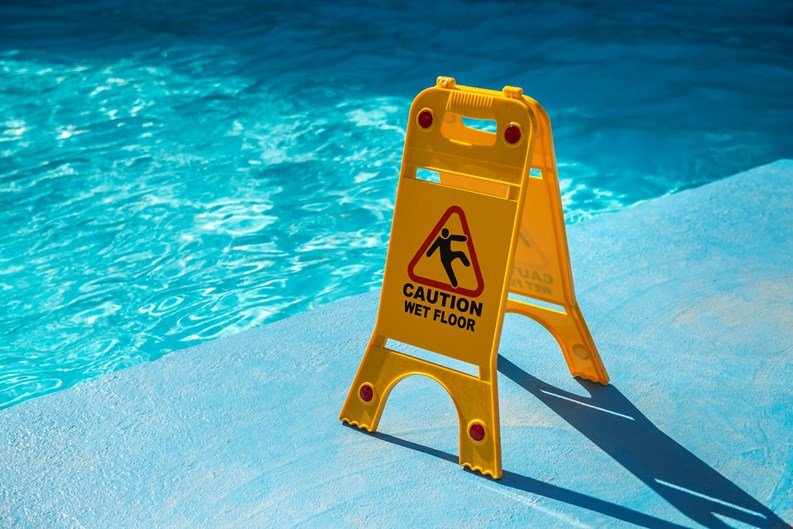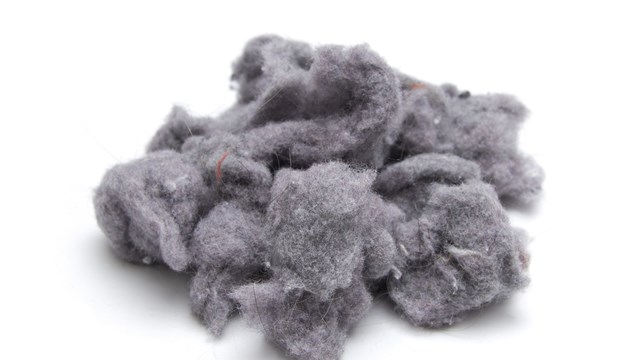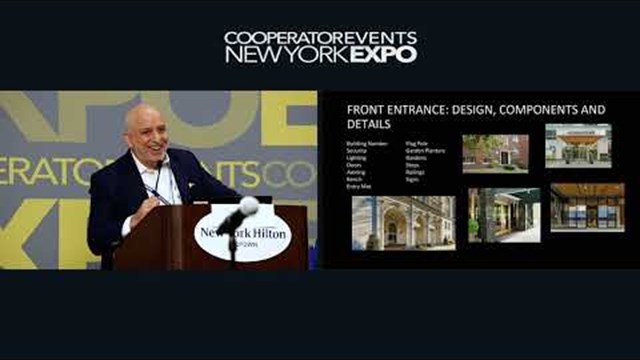One of the biggest perks of modern multifamily living is the all-inclusive, amenity-rich building or HOA. Depending on your own building’s offerings, you can go to the gym, swim, have a spa treatment, entertain your kids in the community playroom, or even take in a movie. When you add in food delivery services, work-from-home arrangements and Netflix, you don’t really have to leave the building if you don’t want to.
Keeping amenities well maintained is crucial to retaining their value and protecting the safety of those who use them. But that maintenance goes beyond just keeping the floors swept and the lights on. What about hygiene? Is the spa as clean as you would like to believe? Is the children’s playroom a real-life petri dish? Is the screening room a stopover for bed bugs or roaches?
Insuring the Best Conditions
Gail Hamilton is the New York City Executive Director/partner at Professional Fitness Management, a firm that manages building amenities in the greater New York/New Jersey and Washington, D.C. markets. She has more than 30 years’ experience in the field and has worked all over the continental United States. “For each facility,” she says, “you want to make sure there is adequate signage with the rules and regulations, disclaimers, emergency procedures and contact personnel displayed inside the facility. For instance, ‘slippery when wet,’ around pool areas and in shower areas. Things that reduce risk to the property and personnel should be posted and clearly understandable. There should also be training in place for any on-site personnel.”
“The top priority is to maintain a safe, hygienic environment,” says Vincent Rapolla, a property manager at 77 Hudson Street, a 420-unit high-rise condominium in Jersey City, New Jersey. One of the means his team uses to accomplish that is a system of sign-offs to keep track of what’s going on in the association’s various amenity areas – particularly the pool and health club. Done by the maintenance staff, the sign-offs keep track of what safety and hygiene measures where completed, and at what time. “This way I can always tell our clients with certainty that we are keeping the facility in top shape,” says Rapolla.
Pools and Spas
“Pools, saunas, and so forth are known as ‘bathing establishments,’” in industry lingo, says Hamilton. “And a bathing establishment comes under the auspices of the Department of Health in New York City. There are approximately 15 signage bullet points pertaining to pool safety and hygiene. There are four [inspection] cycles per year, and city inspectors come around unannounced. A pool has to be permitted, and once the pool is permitted, the permit goes to the Department of Health, which then comes and does an inspection. If you don’t have any violations, they come back about every three months or so. If you do have a violation, and you can correct it on the spot, they don’t close you down. But if you can’t, they will close you down on the spot. When you rectify the issue, they will return and re-inspect within a few weeks.”
Saunas and Steam Rooms
Hamilton cautions that the issue in steam rooms and saunas is more about safety than cleanliness, in most situations. Inspectors are seeking to make sure that temperature controls are working properly – because heat can kill. If the controls aren’t accurate, that’s a major risk both to anyone using the facility and to the building or association in terms of liability. Alarms have to be functioning and fully operational. Signage is required, as are working temperature gauges. You don’t want anyone to roast, poach or steam to death.
Gyms and Fitness Rooms
Dan Wollman, CEO of Gumley Haft, a New York City co-op and condo management firm, says they have gyms in about 25 of the buildings they manage. “In small gyms in residential buildings,” he says, “with, say, less than 12 pieces of equipment, there aren’t any regular inspections.” The gyms in his buildings are also unstaffed, as they are neither large nor busy enough to require full-time attendants. “The gyms are cleaned twice a day by the buildings’ maintenance staff,” he says. “Gyms tend to be busy early in the morning, from say 5:00 a.m. to 8:00 a.m., then not again till late in the afternoon into the evening. We clean once in the late morning, and once in the later evening. We have a machine called a Dupray machine, which is a ‘green’ product. It cleans and disinfects at the same time with superheated water which reaches 212 degrees. As one of my supers says, ‘No one is allergic to water.’ These facilities often have security cameras as well, not to spy on the residents, but rather for security and emergencies to alert the front desk in the event of a problem.”
Childrens’ Play Spaces
Kids are a blessing, but they can also be messy. Fun as they are, it doesn’t take long for a children’s play area to quickly become a petri dish of bacteria and other biohazards. To prevent the spread of illness and infection among young residents (and their adult caregivers), “all toys should be wiped down every day with disinfecting and sanitizing solution,” says Hamilton. This should be done by the building staff, but parents should do it too. “There should be sanitizing wipes all over the playroom as well. Changing tables should be set off at the far end of the rooms.” Buildings can adopt a policy of not allowing sick children to enter common play areas, but these policies are determined on a building-by-building basis.
“There are general rules,” says Wollman, “but we don’t tell parents how to raise their children. At 1125 Park, for instance, they have both gym and playroom rules. We ask that residents clean up after their children and that they not have parties in the playroom. We also use the Dupray machine in the playroom. It cleans everything and anything.”
Rapolla says that while they don’t have a specific policy to keep sick kids out of the playroom at 77 Hudson, they do what they can to keep the playroom hygienic. They got rid of all the small toys, and wipe down everything a couple of times a day. He relates a story of one resident who accused them of keeping a dirty playroom after her grandchild became sick following a visit. Rapolla showed her the sign-off logs building staff uses to keep track of cleaning and hygiene, as well as the products they used. That satisfied the resident, who backed off her accusations.
Screening Rooms
Rapolla says light snacking is allowed in his building’s movie screening room, and that maintenance staff does a thorough cleaning of the space every week. An exterminator visits once a month. The local fire department does a walk through once a year, and the New Jersey Department of Community Affairs (DCA) also inspects once every five years to make sure all the smoke alarms are working.
However, “the trend is away from screening rooms,” says Hamilton. That said, she recommends that if your building has one – or wants to put one in – give a great deal of thought to the materials used, from flooring to seat upholstery. Installing anti-bacterial and anti-fungal products on the floors, walls and seat covers can make it significantly easier to maintain a clean, hygienic environment.
Battery operated air fresheners using scented essential oils can also be used to improve freshness in all types of facilities. They can be drizzled into air conditioning and ventilation ducts, creating a pleasant but not overwhelming scent ‘signature’ for the space.
Liability or Amenity?
“With any amenity comes potential liability for property damage, or bodily injury to a third party,” says Chicago-based attorney Sima L. Kirch. “Generally, a board is charged to act with reasonable or due care in all areas of association life – particularly including the regulation, upkeep and maintenance of common amenities – to prevent harm from foreseeable danger and/or criminal activity. Failure to do so may result in a finding of breach of duty and a charge of negligence.
“To be held liable,” Kirch continues, “an association would have to have acted negligently, or in breach of their duty, assumed a duty it did not have and failed to perform it with due care, or have a statutory duty to perform [a particular duty]. If a breach of duty or negligence is found, it must be the proximate cause of the injury or loss. A duty is limited by the extent of the undertaking, and injury must be reasonably foreseeable.”
In essence, she concludes: “A board can be sued for a slip, trip or fall at the pool, hospitality room, gym, spa, playground or roof deck, or for products liability, should someone become ill as a result of eating tainted food at an association sponsored event, for example. The best way for a board to protect the association is by employing best practices in regulation, upkeep, and maintenance.”
According to Kirch, these following steps can help an association hedge against any possible claim:
1. Educate both your board and owners on all of the rules and laws (federal, state, county, and local) impacting the use of any particular amenity. In some states, no lifeguards are required when the entry age for using a swimming pool is over age 18, or a person over age 18 accompanies a minor. Even still, an association should post a sign such as “No lifeguard on duty—Swim at your own risk.” And if the association chooses to hire a lifeguard, then he/she must be properly certified.
2. Prepare strong rules and policies and strictly enforce them.
3. Stick to inspection and maintenance plans for both regular upkeep and annual inspections. Maintain rescue equipment, as well as lighting, fencing, pool and door alarms, and an outside phone for emergencies.
4. Review your insurance coverage annually, making sure it’s adequate to cover any specific and unique risks. Your general casualty policy may not cover all of the different common area amenities your community has, such as clubhouses, a pool, storage areas, parking facilities, tennis courts, gyms or playgrounds.
5. In case of an accident or mishap, contact emergency assistance if needed, followed immediately by your insurance carrier and your attorney. Once that’s done, association staff should protect the area and let the professionals take over.
Finally, if your association is considering putting in a gym, spa or other amenity package, here is some expert advice: “If you’re going to put in a gym,” says Wollman, “put in one with adequate equipment. The space has to be well equipped enough for the residents to actually use it.”
“Be careful,” Hamilton adds. “Hire a professional to design the facility and plan it out.” In the end, there’s no point in spending the money if it won’t improve your residents’ lives and raise the values of their units.
A J Sidransky is a staff writer/reporter with The Cooperator, and a published novelist.







Leave a Comment